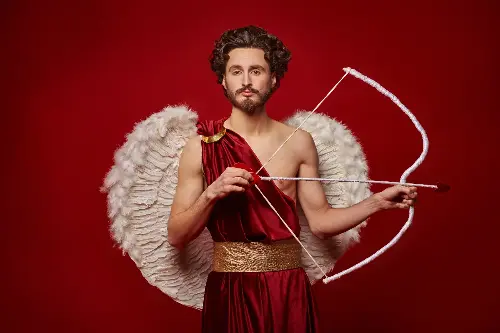Delve into the rich tapestry of history and you'll uncover the enigmatic origins of Valentine's Day, a celebration of love and affection observed across the globe. Far from a mere commercial holiday, Valentine's Day boasts ancient roots entwined with traditional Roman festivals, early Christian saints, and enchanting folklore that lend it a mystique worthy of Cupid himself.

The Ancient Festival of Lupercalia
Our journey begins in the heart of ancient Rome with the festival of Lupercalia. Held from the 13th to the 15th of February, this pagan festival celebrated fertility and purification and heralded the coming of spring. Lupercalia involved peculiar rituals, such as young men running through the streets with thongs made from the skins of sacrificed animals, playfully striking women to bestow fertility.
The Martyred Saint Valentine
The association between mid-February and romance, however, is not purely pagan. The transition from Lupercalia to Valentine’s Day is also intertwined with the legend of Saint Valentine. While the precise identity of this saint is shrouded in mystery—multiple Valentines were martyred during the reign of Roman Emperor Claudius II—the most popular tale recounts a priest who defied the emperor’s ban on marriage, performing secret weddings for young lovers. The priest's martyrdom on February 14th transformed him into a timeless symbol of romantic love.
Chaucer and the Dawn of Courtly Love
Valentine’s Day as a celebration of love was truly popularised during the Middle Ages, thanks in part to the pen of Geoffrey Chaucer. His poem "Parliament of Fowls" speaks of birds choosing their mates on “seynt Voantynes day.” This reference linked Valentine’s Day with courtly love, a concept that placed emphasis on chivalry and expressing affection with poetry, song, and gallant gestures.

Cupid’s Classical Connection
No exploration of Valentine’s Day lore is complete without mentioning Cupid, the winged deity of desire. While often depicted as a mischievous cherub in modern times, Cupid has deeper roots in classical mythology. Known as Eros in Greek tradition, he was the god of love and the son of Venus (Aphrodite in Greek). His bow and arrow symbolise the striking force of love's power, threading him into the fabric of Valentine's Day.
Love Tokens and Victorian Elegance
As we advance through time, the exchanging of love tokens between sweethearts on Valentine’s Day became an elegant tradition during the Victorian era. Handmade valentine cards adorned with lace and ribbons were crafted with care, bearing heartfelt verses. This era also witnessed the rise of the postal service, which allowed love notes, known as ‘valentines’, to be exchanged anonymously, adding an element of intrigue and mystery to the day.
The Global Spread of Valentine's Traditions
While Valentine's Day has its roots in Western traditions, it has been embraced by various cultures around the globe, each lending its unique touch to the celebration. In some countries, such as Japan and South Korea, it's customary for women to give chocolates to men, with a separate day reserved for men to return the favour. Elsewhere, such as in Wales, love spoons are carved and gifted as symbols of affection.

Valentine’s Day in the Modern Age
Today, Valentine's Day is celebrated with a blend of time-honoured customs and modern flair. Romantic dinners, exquisite bouquets, and decadent chocolates remain staples, while innovative trends like Galentine's Day, celebrating female friendship the day before, showcase the holiday's evolving nature. In the age of social media, Romantic gestures and declarations of love can go viral, illustrating that the essence of Valentine's Day remains resilient and adaptable.
Cupid's legacy, therefore, is far from a simple one. Every February 14th, we partake in a historical lineage that stretches back centuries, a confluence of pagan festivals, Christian martyrdom, chivalric romance, and mythological deities. Valentine’s Day is not merely a date on the calendar but a tapestry of rituals and customs that continuously evolves, yet always centres around the universal human experience of love. Whether steeped in tradition or adapted to suit contemporary sensibilities, the charm and mystery of Valentine's Day endures, a testament to Cupid's enduring arrow.
